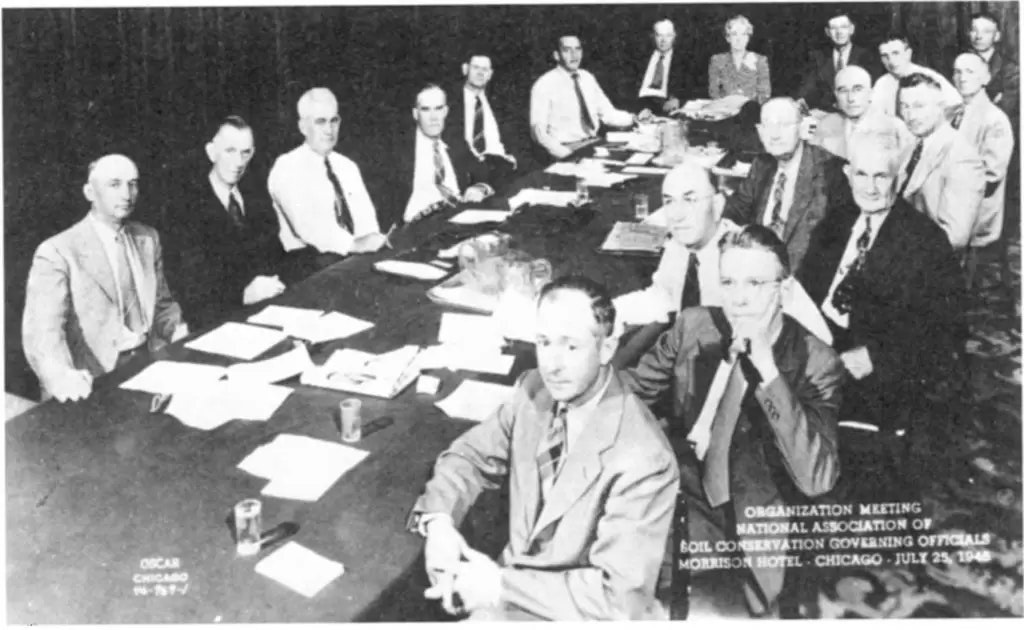NACD HISTORY

Following the devastation of the Dust Bowl in the 1930s, President Franklin Delano Roosevelt recommended the Standard State Soil Conservation Districts Act be signed into law by all state governors. This act gave states a step-by-step guide to create conservation districts and listing their powers and responsibilities. The first conservation district, Brown Creek Soil and Water Conservation District (SWCD), was established in North Carolina on August 4, 1937. Arkansas became the first state to enact legislation regarding conservation districts. By July 1, 1945, all 48 states had passed district-enabling acts.
Conservation districts grew stronger during the 1940s thanks in part to the transfer of heavy-duty WWII military equipment to peacetime uses in protecting and developing soil and water resources. In January 1946, district representatives met in Washington, D.C., to support surplus equipment transfer legislation. The failure of this legislative effort was a clear indication that district officials needed to band together to speak with one, unified voice.
On July 25, 1946 at the Morrison Hotel in Chicago, 18 representatives from 17 states created the National Association of Soil Conservation District Governing Officials. NACD’s first executive officer was a woman named Ellen Cobb. She was an SCS employee in South Carolina who served as executive secretary from 1946-48, and is pictured in the photo below.

Source: National Association of Conservation Districts (NACD) - NACD History - (nacdnet.org)

“One of the best, and certainly the most promising, of the devices yet invented by man for dealing democratically and effectively with maladjustment in land use, as well as for carrying forward positive programs of desirable conservation, and for maintaining the work, is the soil conservation district.” –Hugh Hammond Bennett
CURIOUS TO KNOW MORE ABOUT THE DUST BOWL?
Browse these recommended sources for more information:
- Dust Bowl: Causes, Definition & Years - HISTORY
- Visit this PBS website - The Dust Bowl - A Film by Ken Burns
